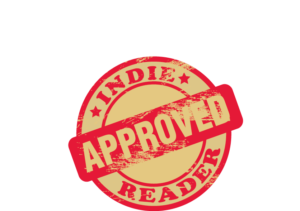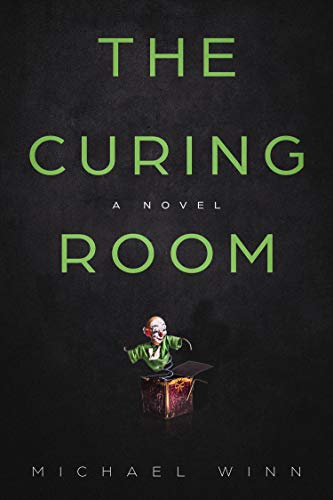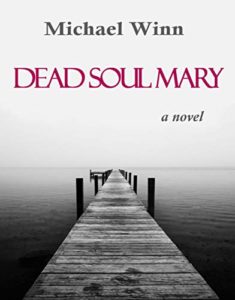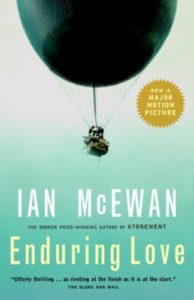
The Curing Room received a 4+ star review, making it an IndieReader Approved title.
Following find an interview with author Michael Winn.
What is the name of the book and when was it published?
I’ll admit it. Naming books is hard for me. Stressful, actually. Sometimes I’ll end up with up a completed MS with no title attached. It’s a lot like naming a baby. A name is a label that represents and follows a person, and it’s kind of hard to change later. Recently I read a news article where an airline ticket-taker mocked a small girl’s name. The name was ABCDE – pronounced Absidee – and the mother was livid at the worker’s lack of sensitivity. See what happens? As a monument to her own cleverness, the mom named her newborn with same quick, gimmicky thought-process given to a vanity license plate, but, sadly, it’s the child that has to suffer the lifelong consequences – poor kid. Naming people and books shouldn’t be taken lightly. After much thought, I think I came up with a good one. My book is called The Curing Room (2018). Sorry, but I won’t disclose how the title came about or what it means. Just like a person, you’ll have to invest the time and get to know the book.
What’s the first line of the book?
First, I reminded myself not to start with a weather forecast. Then I wrote:
“Without warning, a defined yet fleeting opportunity to do something important might come about.”
What’s the book about? Give us the “pitch”.
Here’s what I say while shamelessly hawking the book:
Nothing is what is seems. A horrific accident. A dead girl. A long-held secret. All the lies and deceit lead to the same mysterious room. This psychologically astute, character-driven thriller unfolds within a sleepy New England college town where Ava Marie Stassi is a young, adjunct professor struggling to advance her career while coping with a recent break-up. After tragedy unexpectedly strikes, Ava is forced by circumstance to match wits against a volatile student, Jared, who brings pent-up hostility fueled by a dark past into her mundane life…and into The Curing Room.
But what is the book really about? It’s about healing. That is, it’s about how we paradoxically go about trying to promote healing by wounding ourselves. Yup, at an emotional level we try to affix leeches. By the way, I need to give a disclaimer: Within my fiction there’s always more going on than just the plot. If the books you enjoy typically don’t contain subtext, if everything is always presented on its face, my book will frustrate and annoy the shit out of you. Be sure to vent by giving it a one-star review on Amazon.
What inspired you to write the book? A particular person? An event?
People are inclined to die around me. It’s true. I find my way to exact places and times when nice people are about to check-out. I’m like a dividing rod for death. In my presence – but not due to my presence – people expire often in the most lurid and spectacularly macabre fashion. There’s too many to cover here, but allow me to list a few: I’ve seen people thrown in the air by cars and taxi cabs. I saw a small airplane fall from the sky and found myself alone at the flaming wreckage, the immediate area strewn with body parts. I’ve seen people succumb to strokes and overdoses. I saw one guy mowing a field with this big tractor-like thing and he went over a steep precipice. He fell out and the machine rolled on top of him. Not crushed but flattened. Only his legs stuck out. For some reason, I kept expecting them to curl-up and I’d end up wearing his boots. Another time, I witnessed this four-hundred pound dude step out of car in a huge, vacant parking lot during winter. Astoundingly, he’d parked next to the only patch of ice in the whole lot. He stepped out of his truck and you can guess what happened next. When I ran to him I saw that one eye’s pupil was a dot and the other was a cast-iron frying pan. Stupidly, absurdly, I asked him, who’s the president of the United States? He told me – incorrectly, not even close – it was Richard Nixon. This was the last words he ever spoke. I still feel guilty about this. Maybe he had something more profound to say but I’d deprived him of his one final rosebud. So, the impetus for The Curing Room came from a similar, brutally tragic accident. I was so affected, so deeply saddened by this particular event that my mind started building a fictional world around it. Soon, I had a story. Then a novel. And now an interview about the novel.
What’s the main reason someone should really read this book?
Well, the short answer is because it’s better. Better than what? Better than what you’d expect – far better. The long answer is that I’ve taken the time to learn the craft. I try to tell a compelling story using interesting structure and ear-pleasing prose. I develop realistic characters with flaws readers can relate to. Maybe my life is different than many popular authors. Cause everyone I meet isn’t famous or beautiful or wildly successful. Most men aren’t amazingly adept in any cool skill you could name and a large proportion of the women I come across aren’t drop-dead gorgeous with insatiable appetites for sex. Moreover, all the real people I’ve met – every single one – have had full lives that existed before their immediate circumstances came to be. People should read The Curing Room because it mirrors our sometimes ugly, rusty reality and does not attempt to construct a better one out of chrome and plastics.
What’s the most distinctive thing about the main character? Who-real or fictional-would you say the character reminds you of?
Ava is Holden Caulfield with ta-tas.
If they made your book into a movie, who would you like to see play the main character(s)?
Please forward a copy of my book to Anne Hathaway. I’ll start working on the screenplay.
When did you first decide to become an author?
It began like this: When I was in the 8th grade, my English teacher assigned the class to read Slaughterhouse-Five by Kurt Vonnegut. Everyone hated it to varying degrees. Except me. I connected with the story, or at least to the book’s unusual structure and playful language. Right in chapter two it says “Listen: Billy Pilgrim has become unstuck in time.” Well, I did listen. And I became unstuck. I began to fall into the flow of stories rushing inside my head. I reread Slaughterhouse-Five and said, “I can do this.” Then, trying to pen a Vonnegut-esque short story, I soon realized there’s no f-ing way I can do this…but I want to.
I would spend a decade studying and learning the craft, finding my own voice, before I could write anything that anybody would actually want to read. But I’m jumping ahead. First, as a hopeful, awkward teen, I proudly gave my father some scribbled pages I’d written – my very first story! My dad graciously spent the next twenty-minutes reading my masterpiece before setting it on the coffee table and returning to his newspaper. His face offered no expression of approval or rejection. Impatient, nervous, I mustered the courage to ask him what he thought. He looked over his reading glasses and said, “If people could make money writing, everyone would write.” I said nothing in reply. Have you ever been kicked in the stomach? Yeah, it was like that. So it goes.
Is this the first book you’ve written?
Nah. I wrote a novel called Dead Soul Mary, published in 2014. IR gave it a 5-star review – woo-hoo. It’s well-developed and complex with innumerable intersecting subplots. But it’s also literary horror, so don’t bother buying it if you’re not familiar with the genre. It also takes a small amount of mental effort on the reader’s part, so stay away if you need your fiction spoon-fed like mushy peas.
I also have two short story collections. Lured and Other Dark Tales is a book of character-driven horror short stories – often available for free. And a second collection – and I’m very proud of this one – titled Not Yet Winter and Better Stories. These stories are so great (for so many different reasons,) sometimes I forget I wrote them. Of course, nobody ever downloads this book, which I’m starting to think is a good thing. Leave this one alone so it can be discovered a thousand years from now like the ruins of some advanced, ancient city.
What do you do for work when you’re not writing?
I pretend to be a police officer and they pretend to pay me.
How much time do you generally spend on your writing?
About 1/1000th of the time I spend re-writing.
What’s the best and the hardest part of being an indie?
Convincing readers that your book doesn’t suck. Look, there are many, many super-talented indie authors. Many who write better books than those being published by the big houses yet can’t find an audience. How could such a gross injustice be continually perpetuated? Well, let’s be honest. Most indie books vary only in degree of suckishness. Many are just poor imitations of midlist, traditionally published authors. Too many indie authors don’t put in the years needed to lean the craft and view copyediting as an optional investment. Ironically, no expense is spared on cover art, go figure… None of this would be too awful to contend with if it weren’t for the mountainous volume of bad books being self-published. The ever-growing glut of inferior indie books consumes the good indie books like that rolling, indifferent, and soul-less 1950s movie-monster, The Blob. Yes, most indie books get swallowed-up into the same disgusting jelly. I can’t really blame the general public. They’ve been lied to before. Many, many times. Now, they don’t even want indie books for free. So, today, the challenge is to grow an audience by seducing one reluctant, scowling, eyebrow-raised reader at a time. I alternate between bribes and threats.
What’s a great piece of advice that you can share with fellow indie authors?
In 1968 there was an Olympic high-jumper named Dick Fosbury. He ended winning a gold medal though that’s not what he’s known for. Fosbury is recognized for inventing a new way of going over the crossbar. While everyone else ran up to the bar and threw one foot over and then brought the other up in a weird scissor-like movement – called straddling – Dick Fosbury came up with a better way. He ran towards the bar but curved and turned at the last second. He went over the bar with his back to it, seemingly floating above it, bringing his legs over last instead of first. People called it the Fosbury flop. But it wasn’t a flop. Not only was he able to sail higher than everybody else, the maneuver was considerably more kind to his nut sacks should he miss. All new authors should aspire to be a Dick Fosbury. Learn the time-tested techniques but then boldly approach their work in new and innovative ways. Yes, to be a great writer, you must consciously decide to be a Dick. So, do that and always remember to keep raising the bar!
Would you go traditional if a publisher came calling? If so, why?
I’ve come to see publishing success as a super-tall, shiny skyscraper. Big-name authors and unknown authors with big-name contacts take the express elevator to the top, thirty floors at a time. Most traditionally published authors take the regular elevator and stop for prolonged periods at every single floor. It’s true. I’ve read the average published author only sells 2,000 copies of his first book. The publisher only provides nominal marketing support, at best, and the author is supposed work tirelessly to promote and secure the title’s success. It’s now a climate where the writer’s social media platform is more important than the book, itself. So, the point is, although you have the access privilege and prestige of taking the elevator, you still may not get to where you want to go, let alone the penthouse. Indie authors have to take the stairs. Yes, we enter through a back door and need to trudge and climb and rest and trudge some more. Sadly, we may never get to where we want to go, either. But at least we’re always moving and not relying on others for our progress. My first novel sold more than 20,000 units. I’m expecting The Curing Room to have a much broader appeal. So, to answer the question, it would take a pretty hefty advance to coax me into the elevator.
Is there something in particular that motivates you?
Er… Let me be as delicate as I can. If a writer needs something to motivate him, he’s not a real writer. Just like music to a musician or art to an artist, writing is an inherent part of a writer. Nobody decides to become a writer. It’s like when a kid decides to express herself through music. Did she really choose to be a musician or did the music choose her? Writing is a trait that gets discovered. That said; if you can walk away, maybe you should walk away.
Which writer, living or dead, do you most admire?
Of course, there are many great writers from the past and present it makes picking one exceedingly difficult. But if someone held a knife to my throat, I’d likely say John Irving. His body of work is large and the quality is consistently excellent. Naturally, even he’s had one or two clunkers, but, hey, we all do. That’s what happens when you refuse to play it safe.
Which book do you wish you could have written?
Oddly, I’d pick Enduring Love by Ian McEwan. The book is smartly written in McEwan’s renowned pitch-perfect prose but also is a brilliant mix of genre and literary stylings. Not to mention that the hot-air balloon scene at the beginning is spellbinding! Did I mention that I wrote The Curing Room? It’s also pretty darn good.


